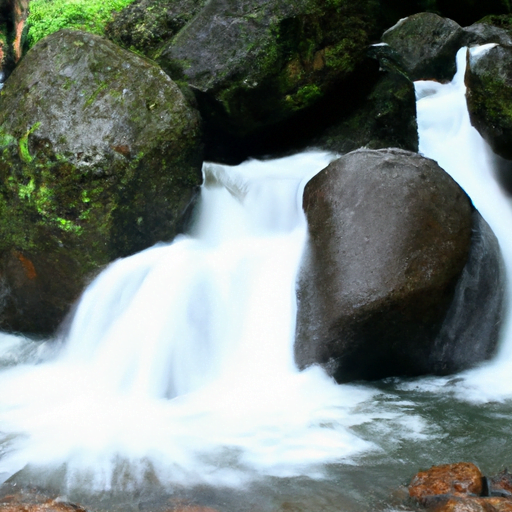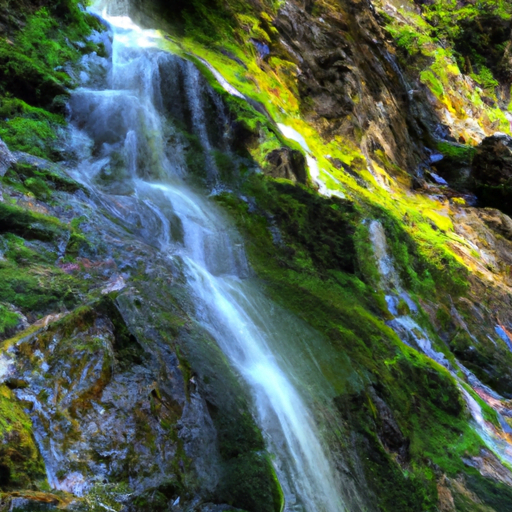So, have you ever heard about this myth that gravity-fed water can actually defy gravity and flow uphill? It sounds crazy, right? I mean, we all learned in school that gravity always pulls things downward. But hey, there’s no harm in exploring the idea a little further, right? So, let’s dive into the topic and find out if it’s just a fun myth or if there’s some truth behind it.
When it comes to off-grid living or sustainable living, gravity-fed water systems often come into the picture. The concept is quite simple – water, when stored at a higher elevation, can be used to create a natural flow downwards, providing a constant supply of water without the need for pumps or electricity. It’s a fantastic idea, especially for those who want to be self-sufficient and reduce their reliance on modern amenities. But can this gravity-fed water really go against the laws of gravity and flow uphill? That’s what we’re here to find out!
In this article, we’ll explore the science behind gravity and how it affects the flow of water. We’ll delve into the concept of potential energy and how it plays a crucial role in understanding gravity-fed water systems. We’ll also take a look at some real-life examples and case studies to see if there are any instances where gravity-fed water has seemingly gone against gravity and flowed uphill. So, if you’re intrigued by this myth and want to know more about the science behind it, stick around and let’s debunk or confirm this fascinating theory together!

Exploring the Myth: Can Gravity-Fed Water Defy Gravity and Go Uphill?
Off-grid living has become increasingly popular in recent years, as people seek to reduce their reliance on external energy sources and embrace a more sustainable lifestyle. One key aspect of off-grid living is the use of gravity-fed water systems, which harness the natural force of gravity to provide a reliable water supply. However, there exists a common myth surrounding gravity-fed water systems – the belief that they are unable to defy gravity and flow uphill. Let’s take a closer look at this myth and explore the possibilities of gravity-fed water going uphill.
What is gravity-fed water?
First, let’s understand what exactly gravity-fed water is. Gravity-fed water systems utilize the force of gravity to transport water from a higher elevation to a lower elevation. It relies on the principle that water naturally flows downwards due to the pull of gravity. This type of water system is commonly found in rural areas or off-grid locations where access to electricity or pressurized water is limited.
Gravity-fed water systems come in different types, including spring-fed systems, rainwater harvesting systems, and surface water systems. These systems collect water from natural sources such as springs, rainwater, or rivers, and direct it through pipes to a desired location for use.
Understanding the concept of gravity
To comprehend the possibilities of gravity-fed water going uphill, it is crucial to understand the concept of gravity itself. In simple terms, gravity is the force that attracts objects towards one another. It is a fundamental force of nature that governs the behavior of celestial bodies, including our planet Earth.
Regarding water, gravity plays a vital role. It causes water to flow downwards, seeking the lowest point or level due to the gravitational force exerted by the Earth. This downward flow is the basis for gravity-fed water systems, as they harness this natural force to transport water.
The physics behind gravity-fed water
To better grasp why gravity-fed water can or cannot go uphill, it is essential to consider the physics at play. Gravity affects water pressure, potential energy, and gravitational potential energy within a gravity-fed system.
Water pressure is influenced by the force of gravity. As the water flows downhill, the potential energy of the water decreases due to its descent. This decrease in potential energy is converted into kinetic energy, resulting in increased water pressure. This increased pressure allows gravity-fed water systems to provide a consistent and reliable supply of water.
Dispelling the myth: Gravity-fed water and uphill flow
Now, let’s address the myth surrounding gravity-fed water systems – can they defy gravity and flow uphill?
Contrary to the myth, gravity-fed water systems can indeed transport water uphill. However, there are certain limitations to consider. The ability of water to flow uphill in a gravity-fed system depends on the elevation and gradient of the terrain.
While gravity can assist in moving water uphill, it cannot overcome the inherent resistance of gravity acting against the water. In other words, the gravitational potential energy required to move the water uphill must be greater than the potential energy gained from the downhill flow.
Factors impacting the flow of gravity-fed water
Several factors influence the flow of gravity-fed water, especially when it comes to uphill flow. These factors include elevation changes, friction loss, and pipe diameter.
Elevation changes play a crucial role in determining whether gravity-fed water can go uphill. If the increase in elevation is too significant or steep, the gravitational potential energy required may exceed the potential energy available, hindering the uphill flow of water.
Friction loss is another factor that impacts the flow rate of gravity-fed water. As water travels through pipes, friction between the water and the pipe walls leads to energy loss. The longer the pipe or the smaller the diameter, the greater the friction loss, which can impede the uphill flow of water.
Lastly, the diameter of the pipes used in a gravity-fed system affects the water flow. Larger pipes allow for a greater volume of water, while smaller pipes may restrict the flow, making uphill transport more challenging.
Harnessing gravity for off-grid living
Despite the limitations, gravity-fed water systems hold numerous advantages in off-grid living environments. They provide a sustainable and reliable water supply without the need for external energy sources. By utilizing the natural force of gravity, off-grid communities can reduce their reliance on traditional, energy-intensive water supply systems.
Furthermore, gravity-fed water systems contribute to sustainable water management. They minimize the over-extraction of water from natural sources and promote efficient use based on the available supply. This conservation of resources is crucial, particularly in areas where water scarcity is a concern.
Effective strategies for maximizing uphill flow
To maximize the uphill flow of water in a gravity-fed system, several strategies can be implemented.
One effective strategy is to optimize the design and layout of the pipes. Minimizing the length of the pipes required for uphill transport and ensuring proper slope angles can reduce friction loss and improve water flow. Additionally, considering the diameter of the pipes is essential, as larger pipes offer less resistance to gravity-fed water flow.
Pressure-boosting techniques can also be employed to enhance uphill flow. These techniques involve using mechanisms such as pumps or pressure chambers to increase water pressure and overcome the resistance of gravity during uphill transport. While these methods may require additional energy input, they can enable water to reach higher elevations.
Implementing efficient water storage solutions is another way to maximize the uphill flow of water. By storing water at higher elevations, gravity can assist in moving the water downhill, reducing the energy required for subsequent uphill flow.
Utilizing gravity-fed water systems in various applications
Gravity-fed water systems have numerous applications, ranging from agricultural irrigation to residential water supply and community water distribution.
In agricultural irrigation systems, gravity-fed water can be used to water crops efficiently. By utilizing the force of gravity, water can be distributed to fields without the need for complex pumping mechanisms. This reduces energy consumption and promotes sustainable farming practices.
For residential water supply systems, gravity-fed water offers a reliable and cost-effective solution, particularly in remote or off-grid areas. With proper design and layout, water can be transported from a higher elevation to meet the needs of households, ensuring a constant supply.
Gravity-fed water systems can also be utilized in community water distribution. By installing water tanks at elevated locations and implementing an efficient network of pipes, water can be distributed to multiple households or public facilities without relying on electrical pumps. This promotes self-sufficiency and resilience in community water management.
Benefits and limitations of gravity-fed water systems
Gravity-fed water systems offer several benefits, including reduced reliance on external energy sources, sustainable water management, and cost-effectiveness. They provide a reliable water supply without the need for complex machinery or electrical infrastructure.
However, it is important to acknowledge the limitations of gravity-fed water systems. They require careful planning and design to ensure proper slope angles, pipe sizing, and pressure-boosting techniques for uphill flow. Additionally, they may not be suitable for areas with significant elevation changes or extremely steep terrain.
Conclusion: Embracing the possibilities of gravity-fed water
In conclusion, gravity-fed water systems can defy gravity to a certain extent and transport water uphill. However, there are inherent limitations that must be considered, such as elevation changes and the resistance of gravity. By understanding the physics behind gravity-fed water systems and implementing effective strategies, uphill flow can be maximized.
Off-grid living and sustainable water management can greatly benefit from harnessing the potential of gravity-fed water systems. By combining technology with the forces of nature, we can ensure a reliable and sustainable water supply for current and future generations. Embracing the possibilities of gravity-fed water opens up new opportunities for off-grid communities and encourages further research and innovation in this field. So, go ahead and explore the myth – gravity-fed water can indeed go uphill!





